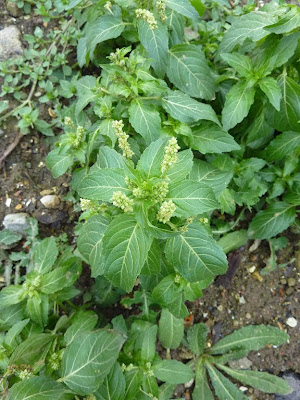Two more

Pan-listing fever found me looking at a photograph of a moss (above) that I took on Sunday (at Stourhead in Wiltshire) and deciding, rightly or wrongly, that it must be Brachythecium rutabulana , a type of feather-moss. As with all such groups, whose species number hundreds and can be bewilderingly similar, my declaration of identification is somewhat a leap of faith. I can also reveal that I also had an armchair tick this evening - I was reading about rotifers (go and look it up) and was pleased to find out that there is a common species, Philodina roseola , that lives in water butts and bird baths that has a habit of turning the water in the latter red. This often happens in our bird bath and I have wondered what it is that magically makes the water a living rusty soup. Now I know. Pan-list: 2626 (until someone cleverer than me tells me what the moss really is).






